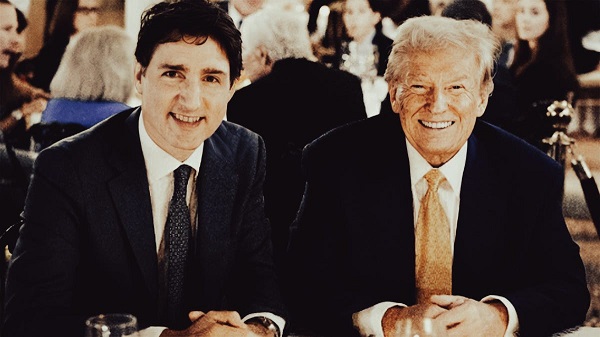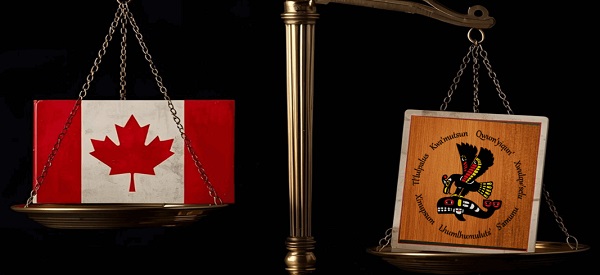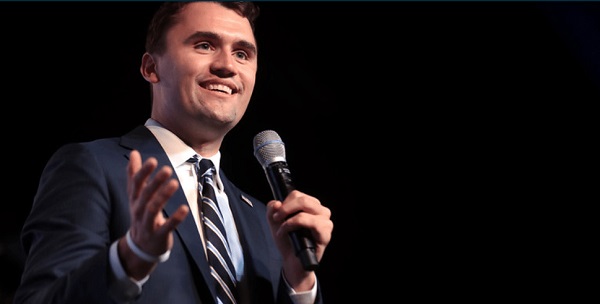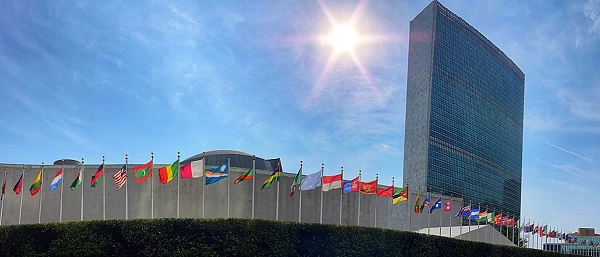Business
Out-Trumping Trump: A Mission Without a Win

From the Frontier Centre for Public Policy
Diplomacy is often a world of planned whispers and subtle signals to communicate complex messages. So, even sleepy folks noticed when the PM made a much-publicized bold (and seemingly impromptu) move and flew to Florida to play Trump-Whisperer. What was the PM hoping to get from that appearance? The best way to evaluate such diplomatic moves is to measure results against expectations.
From start to finish, the trip read like Trump’s move, when the president flew in a similarly bold and unanticipated fashion to pacify the leader of North Korea, Kim Jong-un –the “Little Rocketman.” Trudeau’s trip to see Trump was modelled on Trump’s Korean trip; it was an attempt to out-Trump Trump. That was the expectation.
Amid talk of nuclear weapons deployment, Trump surprised the world in 2017 by going to North Korea to meet with the leader of the most insular country on the planet, a man the traditional media painted as an irrational lunatic. That is not unlike the image of Donald Trump that CBC and the MSM chorus in Canada present.
Similarly, Prime Minister Justin Trudeau surprised his followers and detractors, by flying to Mar-a-Lago, the capital of Trump’s world. The purpose was not to avoid a thermonuclear war but a trade war between the two countries. Such a trade war would hurt both countries but could devastate the “vibecessing” Canadian economy, which the Trudeau government is desperately trying to perk up expecting a general election in months.

The news was leaked once the Prime Minister was in the air heading south. A flood of commentators, who pretended to have no authority to speak on the subject, began to discuss what the trip meant and how brave and bold, silly or foolish, the Prime Minister was for undertaking it. This was like the attention surrounding Trump’s journey to North Korea.
The most surprising aspect of the announcement was that Trump had previously mocked and ridiculed the North Korean leader. While we don’t have direct insight into what the North Koreans called Trump at the other end, it was probably far from flattering. Consequently, it was hard to imagine how their interactions would play out. Many argued that the two men had nothing in common, often expressing this with professorial certainty.
There is no evidence that Prime Minister Trudeau has ever called Trump any nasty names in public, but Trump has not been as careful. After the G7 meeting in 2018, Trump referred to Trudeau as being “weak and dishonest.” However, we do know that Justin’s favourite boogeyman is the American “extreme-right,” of which progressive Canadians think Trump is the godfather. Whatever Trudeau and prominent government ministers think of Trump conservatives, they also think of Trump. There are many examples of how government members weaponized the concept. In October 2024, Deputy Prime Minister Chrystia Freeland addressed criticisms from Conservative MPs by stating she wasn’t intimidated by “juvenile playground insults from the wannabe MAGA maple syrup Conservatives.” Similarly, amid discussions about Prime Minister Trudeau’s leadership in October 2024, some government members referred to Conservative Leader Pierre Poilievre as “Maple MAGA” or “Canada’s Donald Trump,” expressing platitudes about threats to democracy. Readers might also recall how every lieutenant in the Trudeau legions pretended MAGA Trumpeteers and Trump himself had crushed Roe v. Wade and then claimed Canada’s Conservatives would do the same.
The PM, too, indulged in the same kind of attack during a July 2023 visit to the Baitun Nur Mosque in Calgary. During the event, Trudeau addressed concerns among the Muslim community regarding his support for the Transexual agenda and the claims of inclusive education in schools. He quickly invoked the anti-American narrative, shaming the man who posed the question for accepting what Trudeau labelled as radical right-wing American propaganda. Trudeau suggested that misinformation about Canada’s sexual education curriculum was being propagated by “the American right-wing,” which he argued was causing unnecessary division and fear among Canadians.
Many people were surprised to see Trump attempting what others had never tried in North Korea. That reaction was akin to that of Canadians who knew what Trudeau and his cabinet had said about Donald Trump and the American right. For Prime Minister Trudeau it was a victory to show pictures of his foray into Trumpian Mordor, giving him the chance to appoint himself the hero who will stop the detonation of a 20 percent tariffs trade bomb.
Immediately following the US election, the Trudeau cabinet quickly backtracked on the Trump insults. They suddenly forgot how they were presenting Trump as the figure behind Pierre Poilievre and his “extreme right-wing politics.” This was done with the same enthusiasm that Trudeau’s critics summon when joking about his supposed genetic connection to Fidel Castro.
Trump’s visit to North Korea reduced some of the heated rhetoric between the two countries; however, the North Korean Stalinist regime remains intact, along with its nuclear capabilities. Trump and Kim Jong-un did not sign any treaty to regulate nuclear weapons or establish lasting peace between their nations. Similarly, Prime Minister Trudeau returned from Florida without any significant outcomes.
There was no joint statement or announcement of an agreement. There were promises to continue discussions, which does not constitute a victory. All Trudeau can claim is a public relations victory like the one Trump touted after his return from North Korea, and that is not insignificant. But showing that Trump was not mean to him is hardly a diplomatic victory.
Trump provided Trudeau with opportunities for photo sessions without conceding anything or making any promises. He maintained his firm demand that Canada strengthen its border security to prevent drugs and potential terrorists from crossing freely. Trump takes satisfaction in the fact that a man he despises travelled to plead with him for leniency regarding his tariff threats. He is fully aware of this dynamic.
Prime Minister Trudeau may portray himself as someone who understands Trump well, but Trump holds the upper hand. He knows Trudeau is “weak” and desperately desires to maintain himself in power, despite his low popularity. Furthermore, Trump understands that Trudeau is willing to make significant political sacrifices to achieve a seemingly favourable resolution to the border issues. Trudeau badly needs a win, and Trump knows that Trudeau is willing to jeopardize his country’s economy to win. Consequently, Trump will likely capitalize on Trudeau’s vulnerabilities for all they are worth.
Trump understands that Trudeau is the ideal Canadian leader to engage with him, which should make Trudeau the least suitable person to negotiate with Trump if Canada’s interests are to be protected.
From that perspective, Trudeau’s trip to Florida is unlike Trump’s trip to North Korea. While both leaders sought to leverage their trips for political and public relations gains, the outcomes reveal the limitations of symbolic diplomacy and Trudeau’s inability to turn the trip into a long-term win. The latter is as much a function of the PM’s lack of skill as it is of the perception among voters that he is veritably done, no matter what.
Prime Minister Trudeau believes he is the only one who can deal with Trump from a position of strength, which is incorrect. His government has gimmicks but no strength left. That is why the prime minister pleads for a Team Canada approach to Trump and quickly condemns skepticism of his abilities as a national betrayal.
Trump will take advantage of that weakness –and if he can nail a man he despises as weak and woke, he will enjoy it the more. Out-Trumping Trump for domestic advantage was a fool’s errand.
Marco Navarro-Genie is VP Policy and Research at the Frontier Centre for Public Policy. He is co-author, with Barry Cooper, of COVID-19: The Politics of a Pandemic Moral Panic (2020).
Business
Over two thirds of Canadians say Ottawa should reduce size of federal bureaucracy

From the Fraser Institute
By Matthew Lau
From 2015 to 2024, headcount at Natural Resources Canada increased 39 per cent even though employment in Canada’s natural resources sector actually fell one per cent. Similarly, there was 382 per cent headcount growth at the federal department for Women and Gender Equality—obviously far higher than the actual growth in Canada’s female population.
According to a recent poll, there’s widespread support among Canadians for reducing the size of the federal bureaucracy. The support extends across the political spectrum. Among the political right, 82.8 per cent agree to reduce the federal bureaucracy compared to only 5.8 per cent who disagree (with the balance neither agreeing nor disagreeing); among political moderates 68.4 per cent agree and only 10.0 per cent disagree; and among the political left 44.8 per cent agree and 26.3 per cent disagree.
Taken together, “67 per cent agreed the federal bureaucracy should be significantly reduced. Only 12 per cent disagreed.” These results shouldn’t be surprising. The federal bureaucracy is ripe for cuts. From 2015 to 2024, the federal government added more than 110,000 new bureaucrats, a 43 per cent increase, which was nearly triple the rate of population growth.
This bureaucratic expansion was totally unjustified. From 2015 to 2024, headcount at Natural Resources Canada increased 39 per cent even though employment in Canada’s natural resources sector actually fell one per cent. Similarly, there was 382 per cent headcount growth at the federal department for Women and Gender Equality—obviously far higher than the actual growth in Canada’s female population. And there are many similar examples.
While in 2025 the number of federal public service jobs fell by three per cent, the cost of the federal bureaucracy actually increased as the number of fulltime equivalents, which accounts for whether those jobs were fulltime or part-time, went up. With the tax burden created by the federal bureaucracy rising so significantly in the past decade, it’s no wonder Canadians overwhelmingly support its reduction.
Another interesting poll result: “While 42 per cent of those surveyed supported the government using artificial intelligence tools to resolve bottlenecks in service delivery, 32 per cent opposed it, with 25 per cent on the fence.” The authors of the poll say the “plurality in favour is surprising, given the novelty of the technology.”
Yet if 67 per cent of Canadians agree with significantly shrinking the federal bureaucracy, then solid support for using AI to increasing efficiency should not be too surprising, even if the technology is relatively new. Separate research finds 58 per cent of Canadian workers say they use AI tools provided by their workplace, and although many of them do not necessarily use AI regularly, of those who report using AI the majority say it improves their productivity.
In fact, there’s massive potential for the government to leverage AI to increase efficiency and control labour expenses. According to a recent study by a think-tank at Toronto Metropolitan University (formerly known as Ryerson), while the federal public service and the overall Canadian workforce are similar in terms of the percentage of roles that could be made more productive by AI, federal employees were twice as likely (58 per cent versus 29 per cent) to have jobs “comprised of tasks that are more likely to be substituted or replaced” by AI.
The opportunity to improve public service efficiency and deliver massive savings to taxpayers is clearly there. However, whether the Carney government will take advantage of this opportunity is questionable. Unlike private businesses, which must continuously innovate and improve operational efficiency to compete in a free market, federal bureaucracies face no competition. As a result, there’s little pressure or incentive to reduce costs and increase efficiency, whether through AI or other process or organizational improvements.
In its upcoming budget and beyond, it would be a shame if the federal government does not, through AI or other changes, restrain the cost of its workforce. Taxpayers deserve, and clearly demand, a break from this ever-increasing burden.
Business
Judges are Remaking Constitutional Law, Not Applying it – and Canadians’ Property Rights are Part of the Collateral Damage

By Peter Best
The worst thing that can happen to a property owner isn’t a flood or a leaky foundation. It’s learning that you don’t own your property – that an Aboriginal band does. This summer’s Cowichan Tribes v. Canada decision presented property owners in Richmond B.C. with exactly that horrible reality, awarding Aboriginal
title to numerous properties, private and governmental, situated within a large portion of Richmond’s Fraser River riverfront area, to Vancouver Island’s
Cowichan Tribes. For more than 150 years, these properties had been owned privately or by the government. The Cowichan Tribes had never permanently lived
there.
But B.C. Supreme Court Justice Barbara Young ruled that because the lands had never been formally surrendered by the Cowichans to the Crown by treaty, (there
were no land-surrender treaties for most of B.C.), the first Crown grants to the first settlers were in effect null and void and thus all subsequent transfers down
the chain of title to the present owners were defective and invalid.
The court ordered negotiations to “reconcile” Cowichan Aboriginal title with the interests of the current owners and governments. The estimated value of the
property and government infrastructure at stake is $100 billion.
This ruling, together with previous Supreme Court of Canada rulings in favour of the concept of Aboriginal title, vapourizes more than 150 years of legitimate
ownership and more broadly, threatens every land title in most of the rest of B.C. and in any other area in Canada not subject to a clear Aboriginal land surrender
treaty.
Behind this decision lies a revolution – one being waged not in the streets but in the courts.
In recent years Canadian judges, inspired and led by the Supreme Court of Canada, have become increasingly activist in favour of Aboriginal rights, in effect
unilaterally amending our constitutional order, without public or legislative input, to invent the “consult and accommodate” obligation, decree Aboriginal title and grant Canadian Aboriginal rights to American Indians. No consideration of the separation of powers doctrine or the national interest has ever been evidenced by
the Court in this regard.
Following the Supreme Court’s lead, Canadian judges have increasingly embraced the rhetoric of Aboriginal activism over restrained, neutral language, thus
sacrificing their need to appear to be impartial at all times.
In the Cowichan case the judge refused to use the constitutional and statutory term “Indian,” calling it harmful, thereby substituting her discretion for that of our
legislatures. She thanked Aboriginal witnesses with the word “Huychq’u”, which she omitted to translate for the benefit of others reading her decision. She didn’t
thank any Crown witnesses.
What seems like courtesy in in fact part of a larger pattern: judges in Aboriginal rights cases appearing to adopt the idiom, symbolism and worldview of the
Aboriginal litigant. From eagle staffs in the courtroom, to required participation in sweat lodge ceremonies, as in the Supreme Court-approved Restoule decision,
Canada’s justice system has drifted from impartial adjudication toward the appearance of ritualized, Aboriginal-cause solidarity.
The pivot began with the Supreme Court’s 1997 Delgamuukw v. British Columbia decision, which first accepted Aboriginal “oral tradition” hearsay evidence. Chief
Justice Lamer candidly asked in effect, “How can Aboriginals otherwise prove their case?” And with that question centuries of evidentiary safeguards intended
to ensure reliability vanished.
In Cowichan Justice Young acknowledged that oral tradition hearsay can be “subjective” and is often “not focused on establishing objective truth”, yet she
based much of her ruling on precisely such “evidence”.
The result: inherently unreliable hearsay elevated to gospel, speculation hardened into Aboriginal title, catastrophe caused to Richmond private and government property owners, the entire land titles systems of Canadian non-treaty areas undermined, and Crown sovereignty, the fount and source of all real property rights generally, further undermined.
Peter Best is a retired lawyer living in Sudbury, Ontario.
The original, full-length version of this article was recently published in C2C Journal.
-

 Business2 days ago
Business2 days agoUN, Gates Foundation push for digital ID across 50 nations by 2028
-

 Alberta11 hours ago
Alberta11 hours agoClick here to help choose Alberta’s new licence plate design
-

 C2C Journal2 days ago
C2C Journal2 days agoCharlie Kirk and the Fragility of Civic Peace
-

 National12 hours ago
National12 hours agoDemocracy Watch Renews Push for Independent Prosecutor in SNC-Lavalin Case
-

 International2 days ago
International2 days agoPoland’s president signs new zero income tax law for parents with two children
-

 Business13 hours ago
Business13 hours agoOver two thirds of Canadians say Ottawa should reduce size of federal bureaucracy
-

 Business1 day ago
Business1 day agoTrump Admin Blows Up UN ‘Global Green New Scam’ Tax Push, Forcing Pullback
-

 Automotive2 days ago
Automotive2 days ago$15 Billion, Zero Assurances: Stellantis Abandons Brampton as Trudeau-Era Green Deal Collapses




